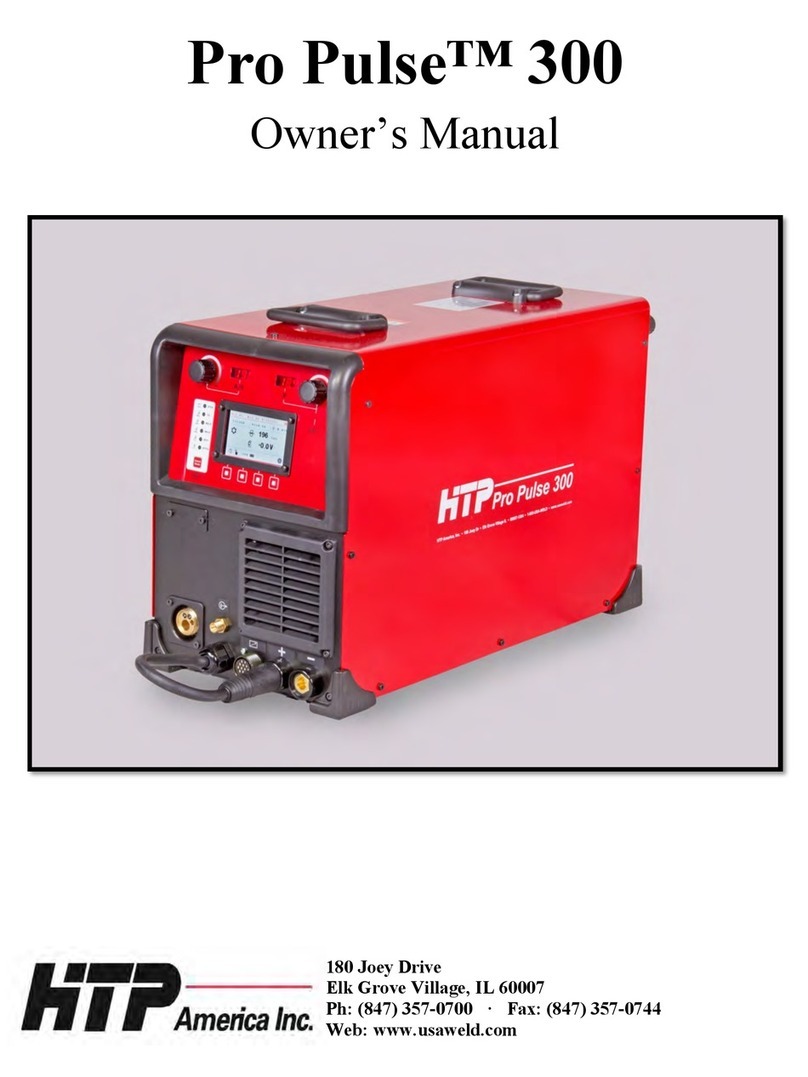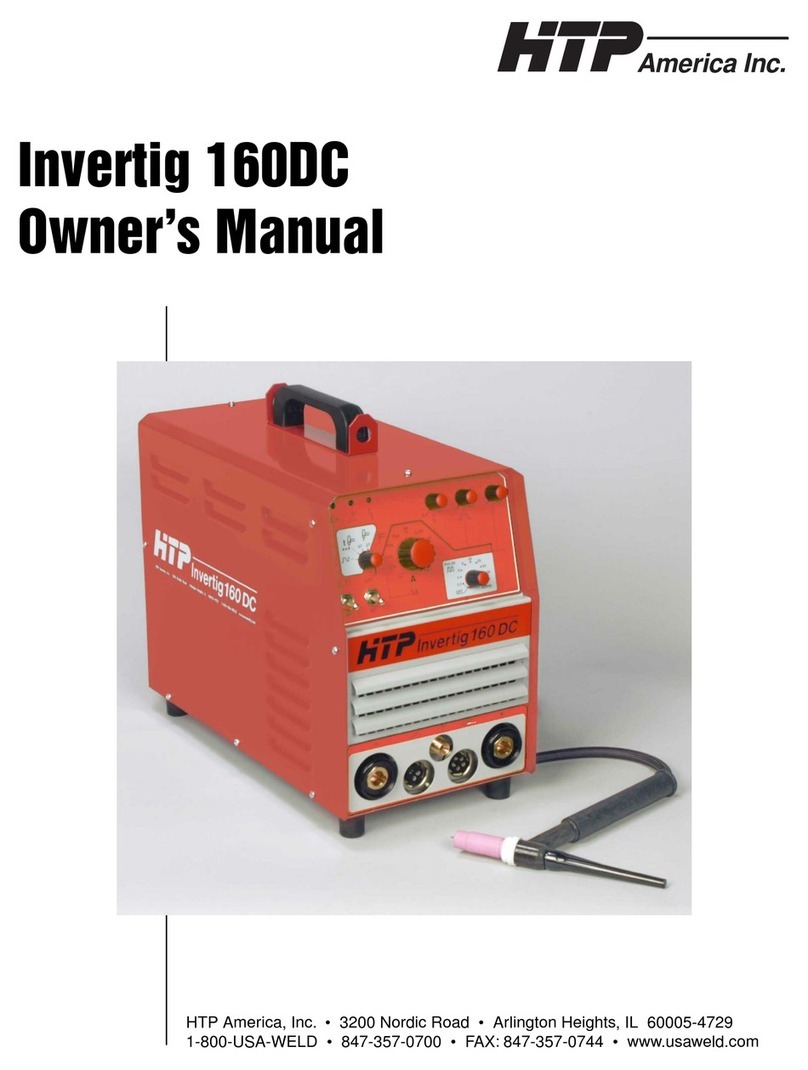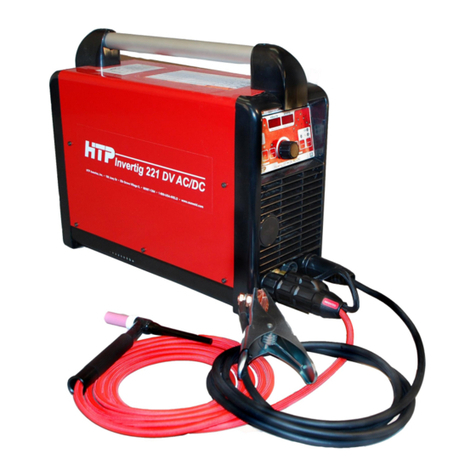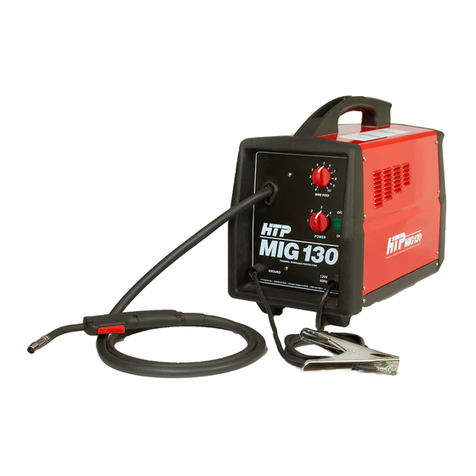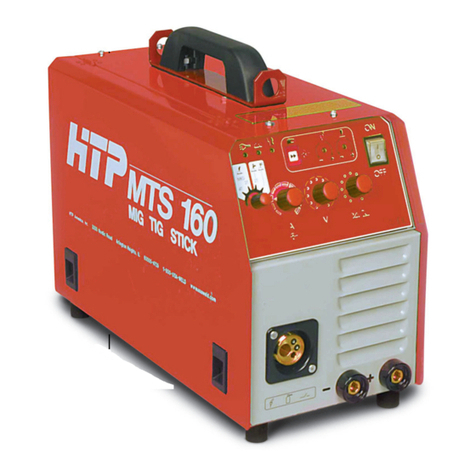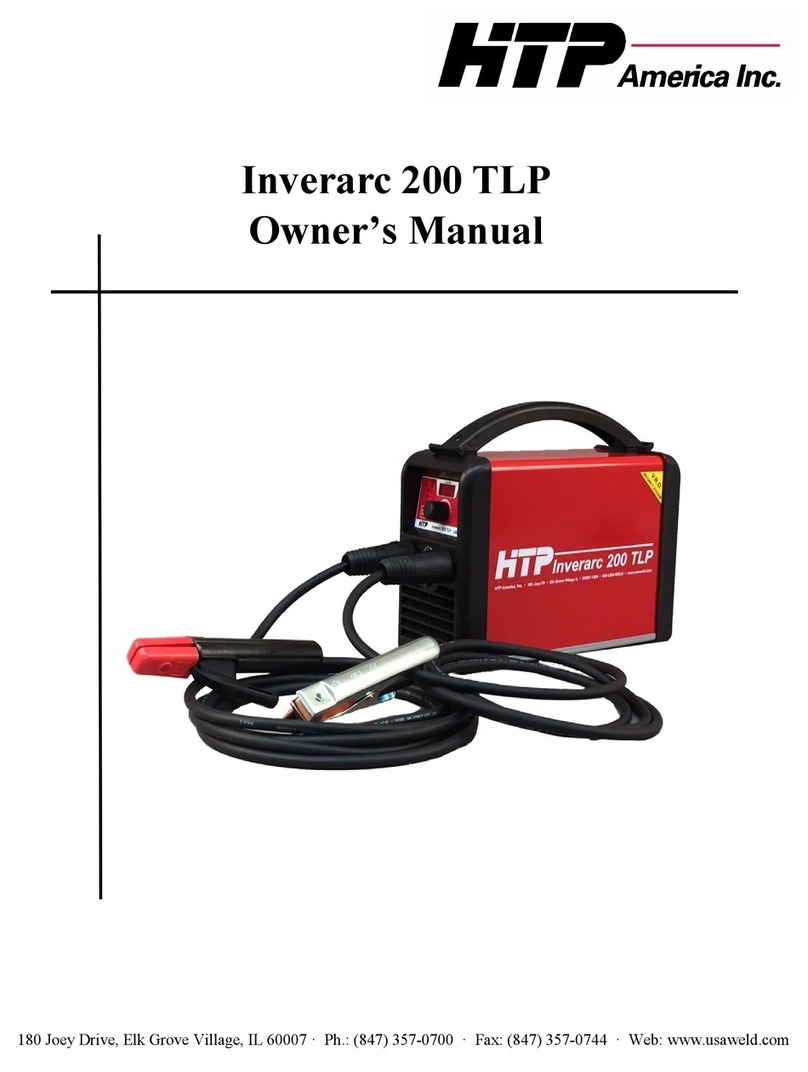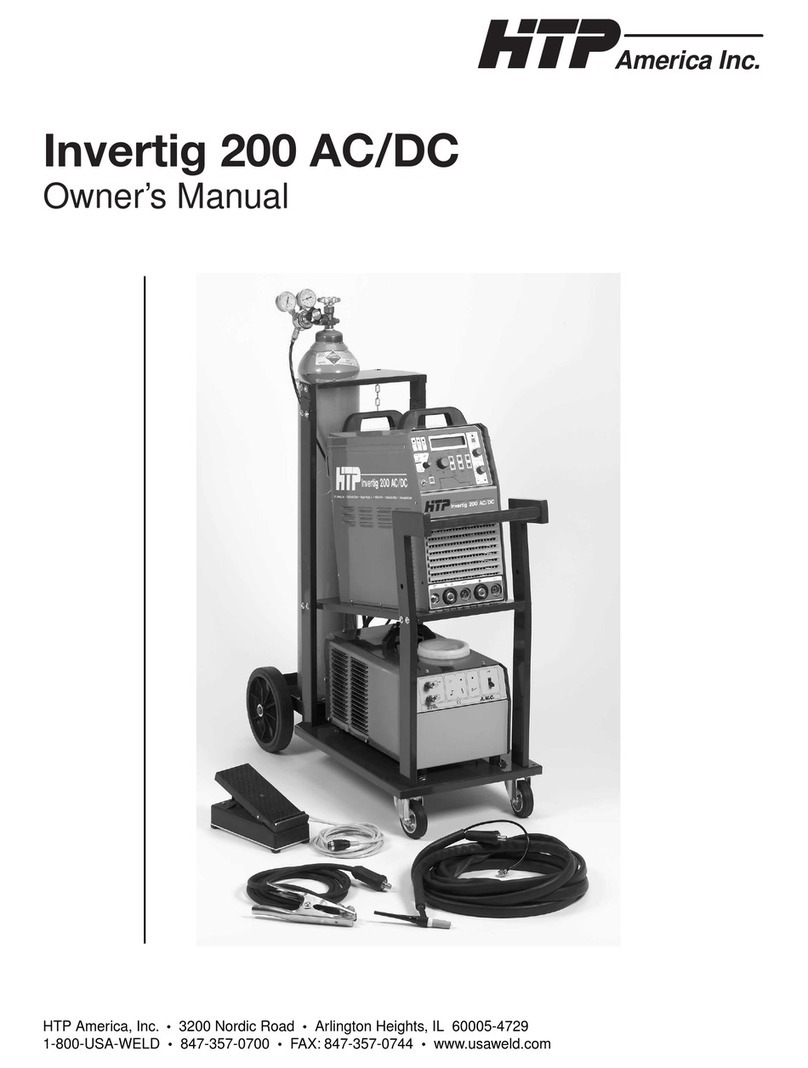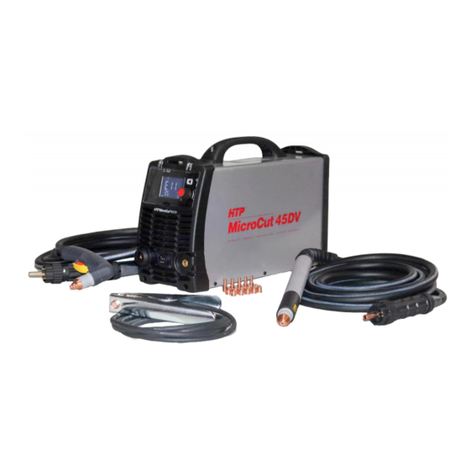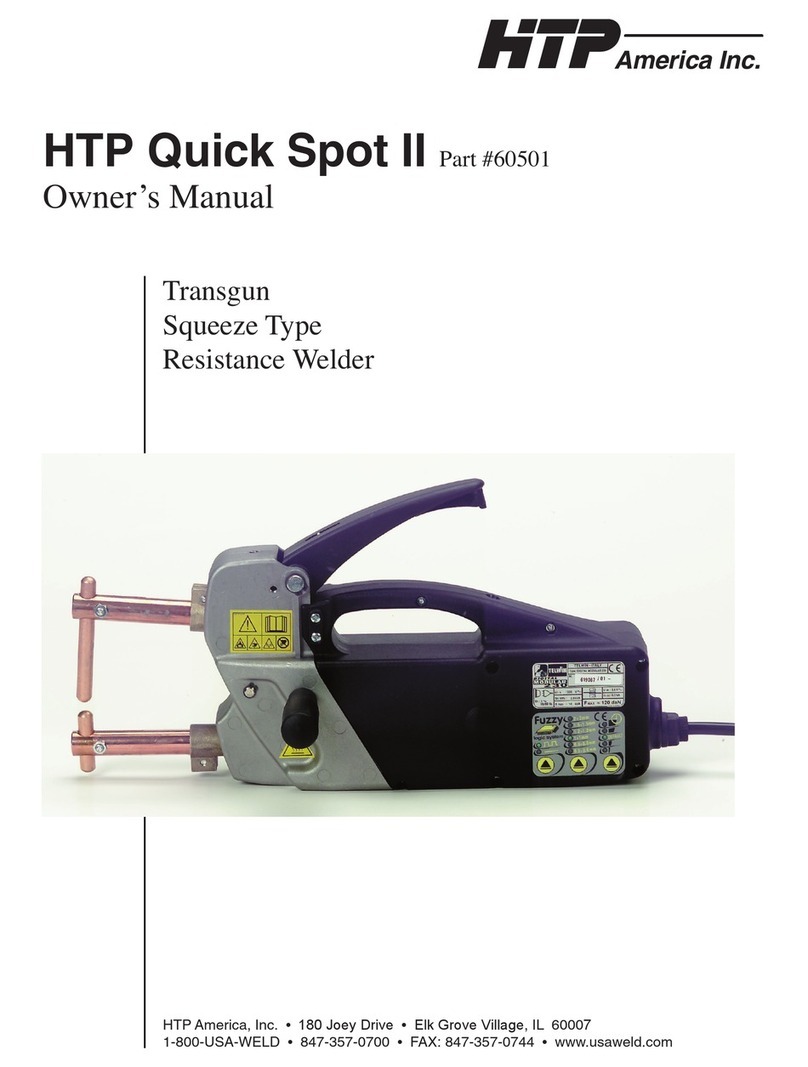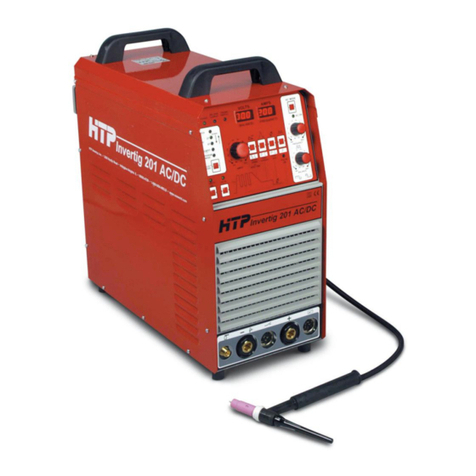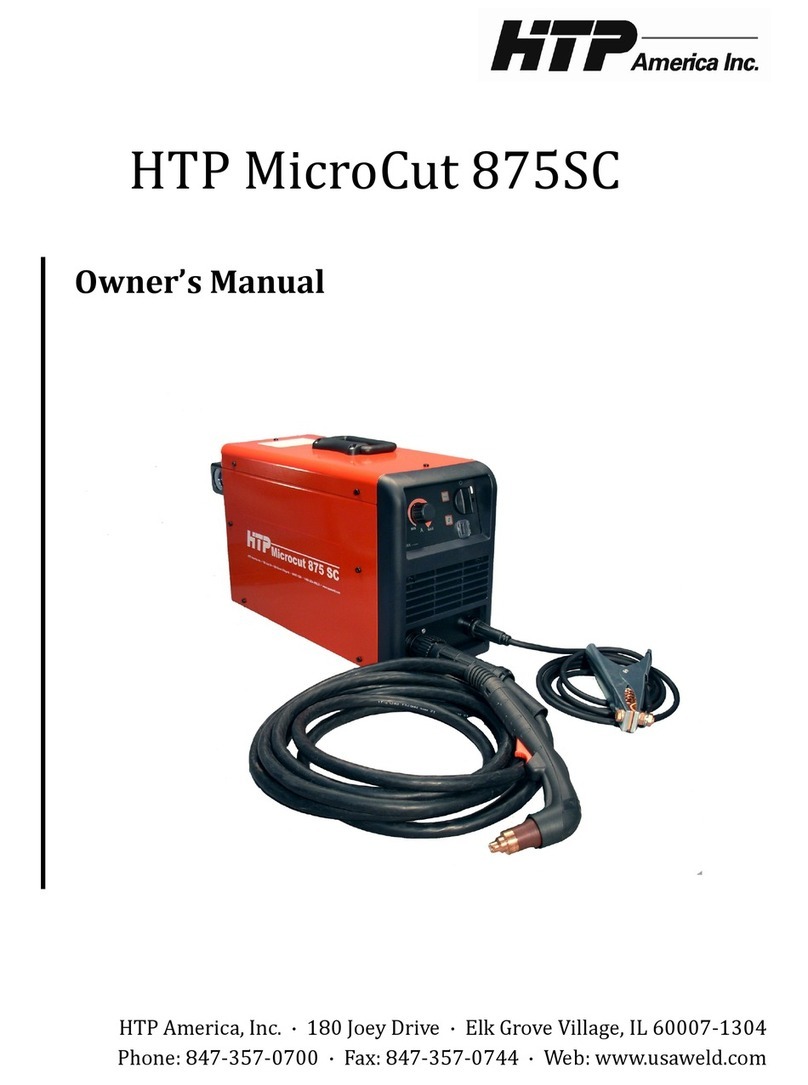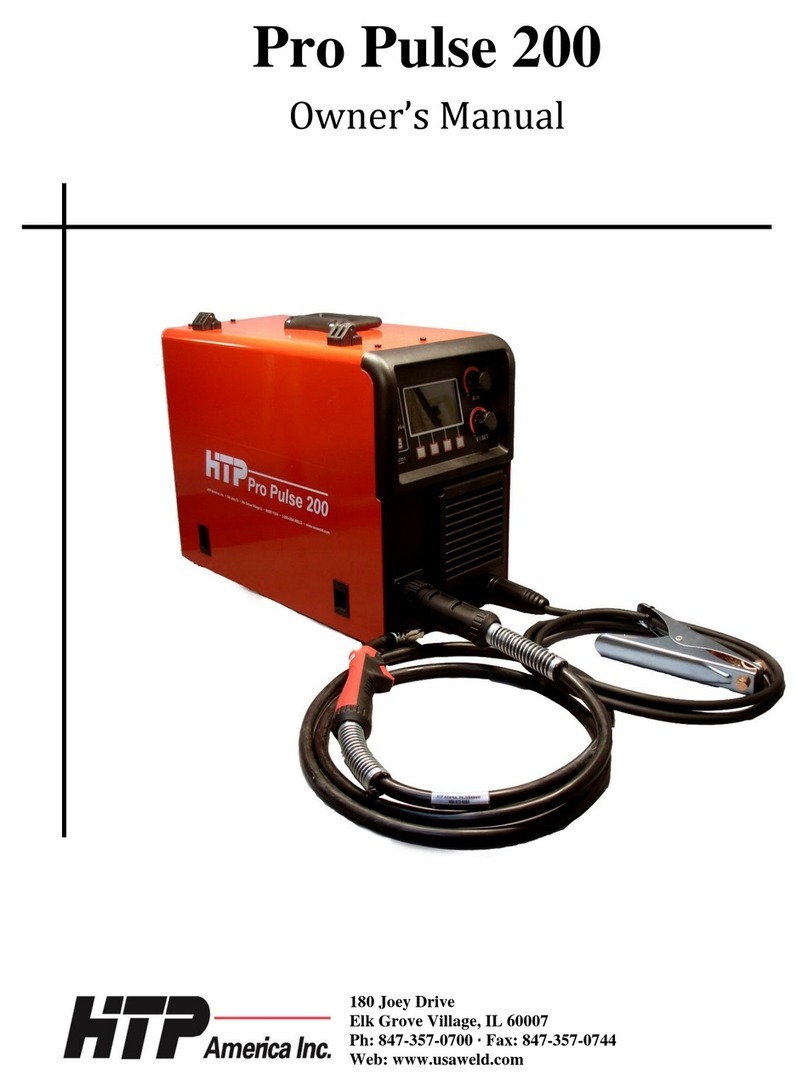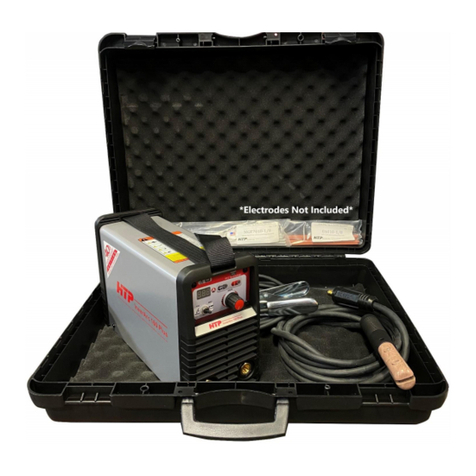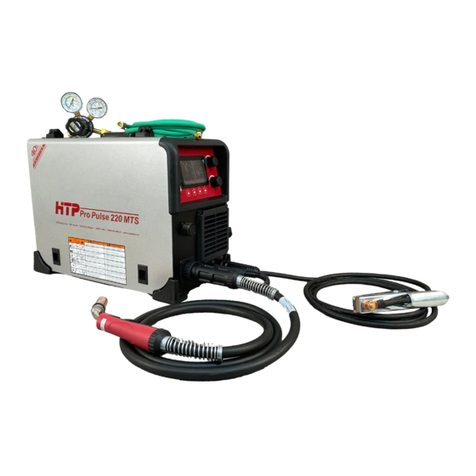1)
FOREWORD
Thank you for purchasing an HTP America® Invertig™301/400—our advanced, multi-process TIG welder. The Invertig
301/400 is a versatile, high-quality, and feature-rich machine that offers pulse features in every welding process. With the
Invertig 301/400 you can run the following processes: SMAW (Stick), SMAW-P (pulsed Stick), GTAW (TIG), and GTAW-P
(pulsed TIG). All four processes offer both AC and DC options.
In addition, the machines feature a Pipe welding mode, which, when selected, deactivates the foot pedal and the
internal gas solenoid so an air-cooled torch with a valve can be used to simulate welding in the field off an engine drive
in TIG or in Stick mode. The Pipe mode is DC only.
In the AC TIG mode, the following wave forms are available: square wave, soft square wave, and triangular wave. The
Invertig 301 is a single-phase only machine, it runs on 208 to 240V. The Invertig 400 offers the ability to run on single-
phase power, from 208 to 240V, or on 3-phase power, from 200 to 575V. For maximum performance (power output
and duty-cycle) we recommend that you connect the machine to 3-phase power. The manual describes the Invertig
301/400 power source and its features and capabilities.
For crisp arc starts and excellent arc stability we also recommend the use of 2% ceriated (U.S. Color Code: Gray;
European Color Code: Orange) tungsten electrodes as our inverter is designed to work best with them.
2)
WARRANTY
It is expressly agreed that there are no warranties, expressed or implied, made by either the Salesman, Dealer, or HTP
America, Inc. on products or parts furnished hereunder, except the Manufacturer’s Warranty against defective
materials or workmanship as follows:
HTP America, Inc. warrants each new welding machine to be free from defects in material and workmanship under
normal use and service for Three (3) Years after delivery to the original purchaser. HTP America, Inc. will repair or
replace, at its factory, any part or parts thereof. Products should be returned to HTP America, Inc., with transportation
charges prepaid, and which its examination shall disclose to its satisfaction to have been thus defective. This warranty
being in lieu of all other warranties, expressed or implied, and all other obligations or liabilities on its part and it
neither assumes nor authorizes any person to assume for it any liability in connection with the sale of its machines.
This warranty shall not apply to any welding machine which has been repaired or altered by unauthorized service
departments in any way so as, in the judgment of HTP America, Inc., to affect its stability and reliability, nor which has
been subjected to misuse, negligence, or accident.
HTP America, Inc. shall not be liable in any event, unless HTP America, Inc. receives notice of alleged breach of
warranty, actual or constructed, specifying the claimed defect within not more than Thirty (30) Days after discovery.
HTP America, Inc. has reserved the right to make changes in design or add any improvements to its products, at any
time, without incurring any obligation to install the same on equipment.
This warranty is void unless the warranty card is sent to HTP America, Inc. within Fifteen (15) Business Days from the
date of purchase.
EXCLUSIONS TO WARRANTY:
1)
TIG welding torches are warranted for a period of Ninety (90) Days against defects in material and workmanship.
2)
Tungsten electrodes, collet bodies, collets, and gas lenses are consumable items, WHICH CARRY NO WARRANTY.
3)
Artic Chill and Smart Water Coolers come with an Eighteen (18) Month Warranty.
Note: This warranty is to the original purchaser only. The warranty can be transferred to another owner, with
HTP’s approval, for a warranty transfer fee. HTP America, Inc. must be notified within Fourteen (14) Days of the sale
and must be provided with the contact information of the original owner, the contact information of the new owner,
and the serial number of the machine.
